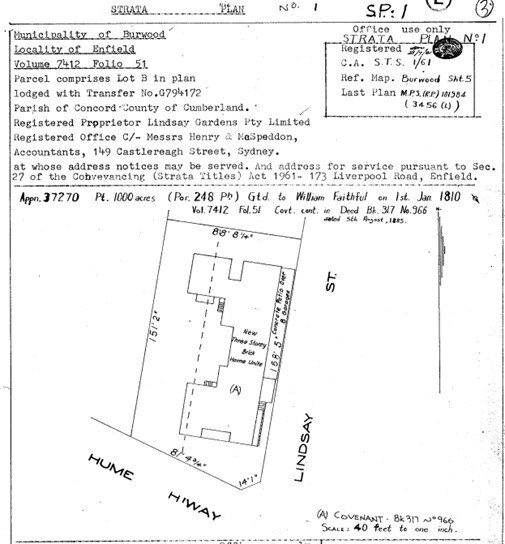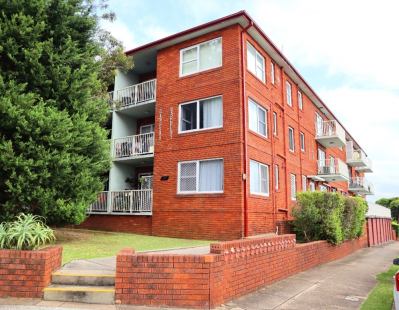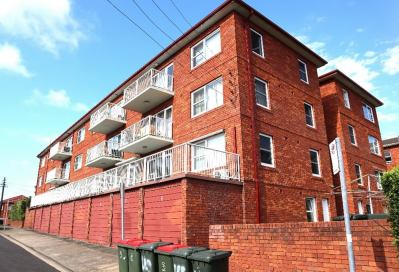In the mid-20th century, innovation flourished in Sydney. The Sydney Opera House was constructed with creativity and innovation. And it was innovative thinking that created strata title as the solution to the housing crisis.
This article explains:
- Why was strata title a novel innovation?
- How does strata title work?
- How has strata title spread around the world?
- What does the first strata title building - Strata Plan 1 look like?
Why was strata title a novel innovation?
Before strata title, two methods were often used to give owners in multi-dwelling properties the right to occupy their unit, and to share responsibility for the building.
Tenants in Common Using this method, each owner’s name is recorded on the title, jointly with the other owners ‘as tenants in common’. The owners signed a Tenants in Common Agreement, a private agreement, to give them the exclusive right to occupy their unit, how they exercise their right to sell, mortgage and lease, and their shared responsibility for maintenance and repair of the building. The owner’s name is on the title, but the location and boundaries of the unit are only found in the Agreement, and not in a registered plan.
Company Title Using this method, the owner’s name is recorded in the shareholders register in a private company. The title to the property is in the name of the private company (hence ‘company title’). The Constitution of the company contains the rules for meetings and gives a shareholder/owner the exclusive right to occupy the unit their shares entitle them to occupy. The owner needs approval from the company to sell, mortgage and lease. The company is responsible for the maintenance and repair of the building. The owner’s title is not secure because their name is not on the title, and there is no registered plan to show the location and boundaries of the unit.
In the late 1950s, property developers found these methods were discouraging buyers because they were too complicated. But the major problem was the reluctance of banks and other lenders to finance buyers because joint ownership or share ownership was not satisfactory security for advances. As a result, there was weak buyer demand for new apartments, and virtually no apartment buildings were built to meet the persistent housing shortage in post-war era Sydney.
Property developers and the Law Society of NSW worked with the NSW State Government to solve the problem. They came up with the Conveyancing (Strata Titles) Bill.
In the second reading of the bill in NSW Parliament on 26 February 1961, the NSW Minister of Justice, Mr. Mannix, called it ‘novel legislation’ and said: ‘that entirely new thinking is called for’ to solve the housing shortage. He said:
- The purpose of the bill was “to facilitate the subdivision of land in strata and the disposition of titles thereto”.
- “The basis of the bill is the registration of a “strata plan” to “define the boundaries of each lot by reference to the floor, walls and ceilings, and the approximate floor area of each lot.”
- “The title of a lot owner is secure”. The owner’s name is recorded on the title, together with any mortgage, and the owner’s proportional entitlement (called a unit entitlement) in the common property. The Certificate of Title for the lot gives the person recorded as owner a Government guarantee of ownership.
- A “statutory body corporate” is automatically set up on registration of the strata plan. Its responsibility is to “preserve and maintain” the common property, which is “the land and building which do not form part of an owner’s lot”. An owner’s unit entitlement is recorded on the Certificate of Title. Being a separate legal entity, the name of the body corporate is recorded on the title as owner, not the names of the owners.
- Rules are to apply to “regulate the communal life of the occupiers” called by-laws.
Source NSW Parliament Legislative Assembly, Hansard 1961 pages 2524 – 2534.
|
Strata by-laws were amazingly short and simple in 1961. They were: A proprietor shall not:
These model by-laws could be changed only by unanimous resolution. |
The Conveyancing (Strata Titles) Act 1961 commenced on 1 July 1961.
It was a great success. A building boom followed.
In New South Wales, over 100,000 strata plans have been registered of which over 85,000 are currently active.
In the 2021 Australian census, 13 per cent of private dwellings were townhouses and 16 per cent were apartments. There are commercial strata - offices, shops and industrial property.
How does strata title work?
Strata title gives the owner of a lot (i.e. the home unit, apartment or townhouse):
- Sole ownership to the lot. The owner can occupy, sell, mortgage, lease and pass their lot as an inheritance, without needing approval from the body corporate (now called the owners corporation). Physically, the lot comprises the cubic airspace inside the unit, including the balcony. The boundaries are the skin of paint on the walls and ceilings, the floor coverings on the floors, the internal surface of the external windows, doors and balcony railing.
The Certificate of Title for the lot records the name of the owner as owner, along with any mortgages and leases.
and - Shared ownership of the common property - the entrances, stairways, driveways, gardens, fences, elevator, swimming pool, the external windows, doors, balcony railings and roof.
The Certificate of Title for the common property records the name of the owners corporation as owner, along with any easements, covenants, restrictions and the strata by-laws.
The Strata Titles Laws govern an owners corporation’s rights and responsibilities. They include maintaining the common property in good repair, strata insurance for the building and public liability, enforcing the strata by-laws, meetings and approving renovations.
Strata owners pay strata levies according to their unit entitlement, determined annually at the Annual General Meeting of the owners corporation.
If an owner wants to carry out renovation work on their lot – to bathrooms and kitchens which require waterproofing membranes, to demolish internal walls, to cover or replace external windows and doors, to cover or uncover flooring, and to change ceilings, they must first obtain approval from the owners corporation.
How has strata title spread around the world?
Strata title has proved to be an excellent way to provide security of title in multi-dwelling buildings. Loans are available to finance strata purchases.
Strata title has spread across the world. The 1961 Strata Titles Act has been the template in most places.
By the 1970s, it was law throughout Australia, and in New Zealand. There are currently over 340,000 active strata schemes in Australia.
Strata title has spread to Asia, to Singapore, Malaysia, Philippines, Indonesia, Macau, Cambodia, India, to South Africa; to the Pacific Islands, to Fiji, Vanuatu, and the Solomon Islands
Strata title has spread to the Americas, to Canada, to the USA States in California, Illinois and Texas, to the Caribbean, to Jamaica, Belize and to South America, to Brazil, where it is often called a condo / condominium title.
Strata Title has spread to the Middle East, to the United Arab Emirates (Dubai and Abu Dhabi) and Saudi Arabia.
In 2002 strata title was adopted in England. It has influenced legislation in several European Countries.
What does the first strata title building - Strata Plan 1 look like?
Strata Plan 1 was the first strata plan in the world.
Strata Plan 1 was registered on 28 July 1961.
Strata Plan 1 is a residential apartment building named “Lindsay Gardens”, located at 189 Liverpool Road, Burwood (a suburb of Sydney). It still stands, essentially unaltered from the day it was built in 1961.
Lindsay Gardens is a three-storey red brick building which contains 18 two-bedroom apartments (each with a balcony), 8 garages underneath, and a rear yard with common laundries and four Hills Hoist clotheslines.
The home units were small by today’s standards, between 68.7 sq m and 75.8 sq m, including balcony.
Images of Strata Plan 1 and the Lindsay Gardens building, appear below.
|
Strata Plan 1 ‘New Three Storey Brick Units’ at Burwood registered on 28 July 1961 |
|
Strata Plan 1 - Lindsay Gardens – Liverpool Road / old Hume Highway front entrance. The 18 letterboxes in the low brick wall are 1961 originals. © Copyright Anthony J Cordato 2025 |
|
Strata Plan 1 - Lindsay Gardens – Lindsay Street side with 8 garages and Hills Hoist Clotheslines in the rear yard |



